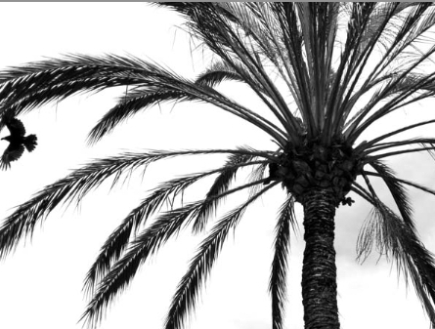
GRAVEYARD CROWS
by Ja Lorian Young
What is it, do you suppose,
that goes on in the heads of crows
that sit upon the graveyard gate
and patiently commence to wait
for spirits gone awandering;
these crows in solemn pondering.
They sit together, wing to wing,
and sometimes they begin to sing
in cawing cries the living hear
as pestilence upon the ear.
But spirits drifting to and fro
are savvy to the words of crow.
“The leaves are gone, the trees are bare,
a chill has settled on the air
and here we are, past Samhain’s gate
and so the hour has gotten late.
Come on, come on, it’s time to go
if we’re to beat the coming snow!”
But spirits rambling toward the door
are hesitant, all wanting more
of all the things they leave behind
and fearful of what they may find;
what fate awaits them where they go
upon the midnight wings of crow?
They crouch behind their weathered slates
and silently begin to wait;
resolving simply to forego
the cautionary tales of crow.
But cutting through the creeping mist
the crows continue to insist:
“The veil between the worlds is thin
but if you’re late you won’t get in
then wandering will be all you’ll do
if you stay here and can’t get through.
Come on, come back, “the crows all cry,
“There are worse things than just to die!”
But spirits do what spirits do.
Some wait too long and don’t get through
and so, unto the earth they’re bound
and left to molder on the ground.
They cannot know the sweet repose
that flew away on wings of crows.
ABOUT THE AUTHOR: Ja Lorian Young, known as Janice to her parents, grew up in a small, New Hampshire town about 10 miles from where the first American potato was planted in 1719; she was sorely disappointed during a second grade field trip to find that they hadn’t kept it. In high school, she was he winner of the Voice of Democracy Essay Contest and was obligated to ride in the Labor Day Parade. The kids who made the posters to hang on the car had drawn very large V’s, little tiny o’s and very large D’s. She spent the school year being known as the VD Princess. That wasn’t enough to deter her from writing, and she has written many poems and short stories since — though only lately feels compelled to publish. Ja Lorian still lives in southern New Hampshire, now with husband and grown kids and assorted cats and an ancient dog, though now she’s considerably further away from the potato.
IMAGE: “Crows Fly by Red Sky at Sunset” by Shibata Zeshin (1880).














